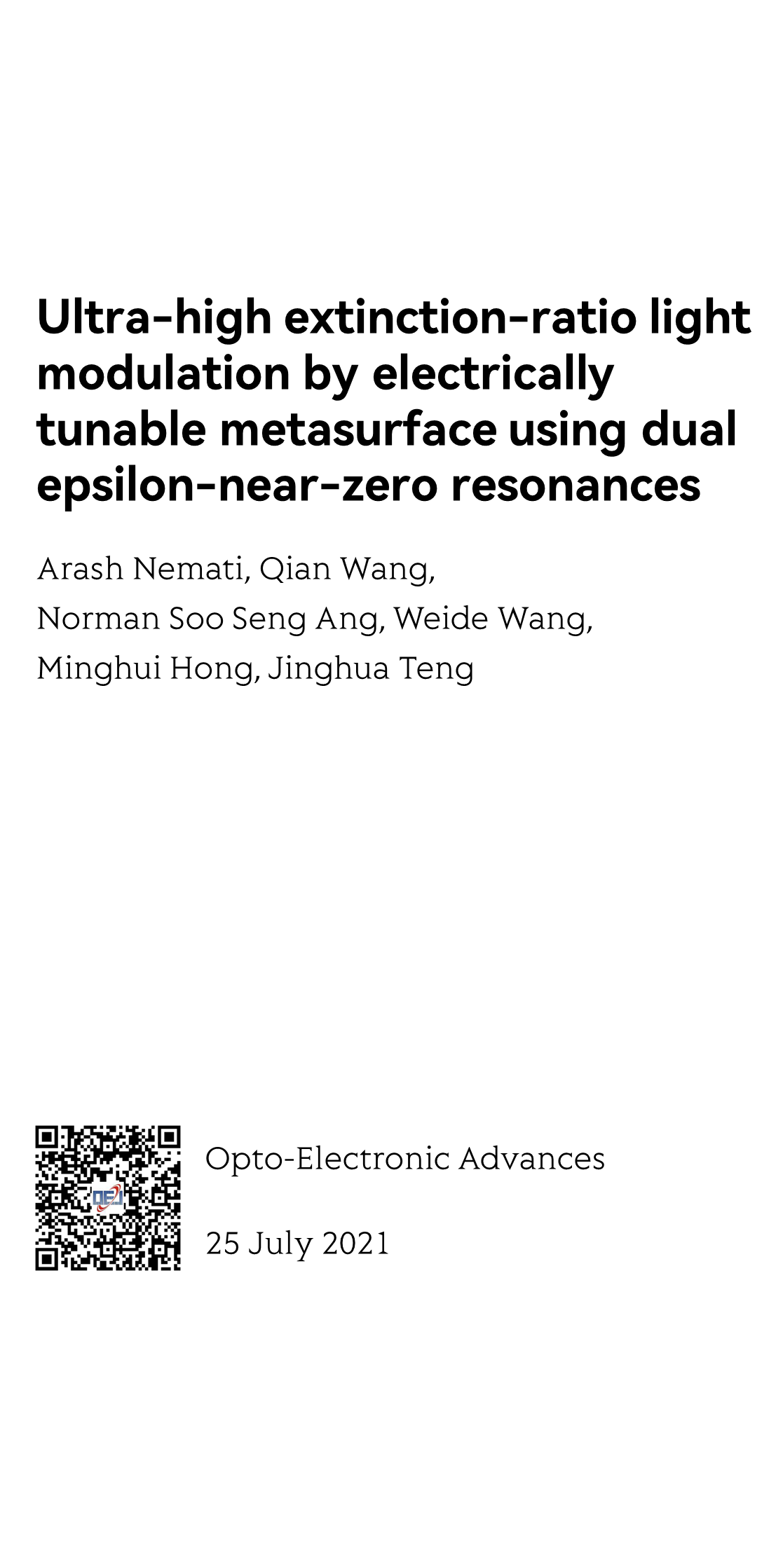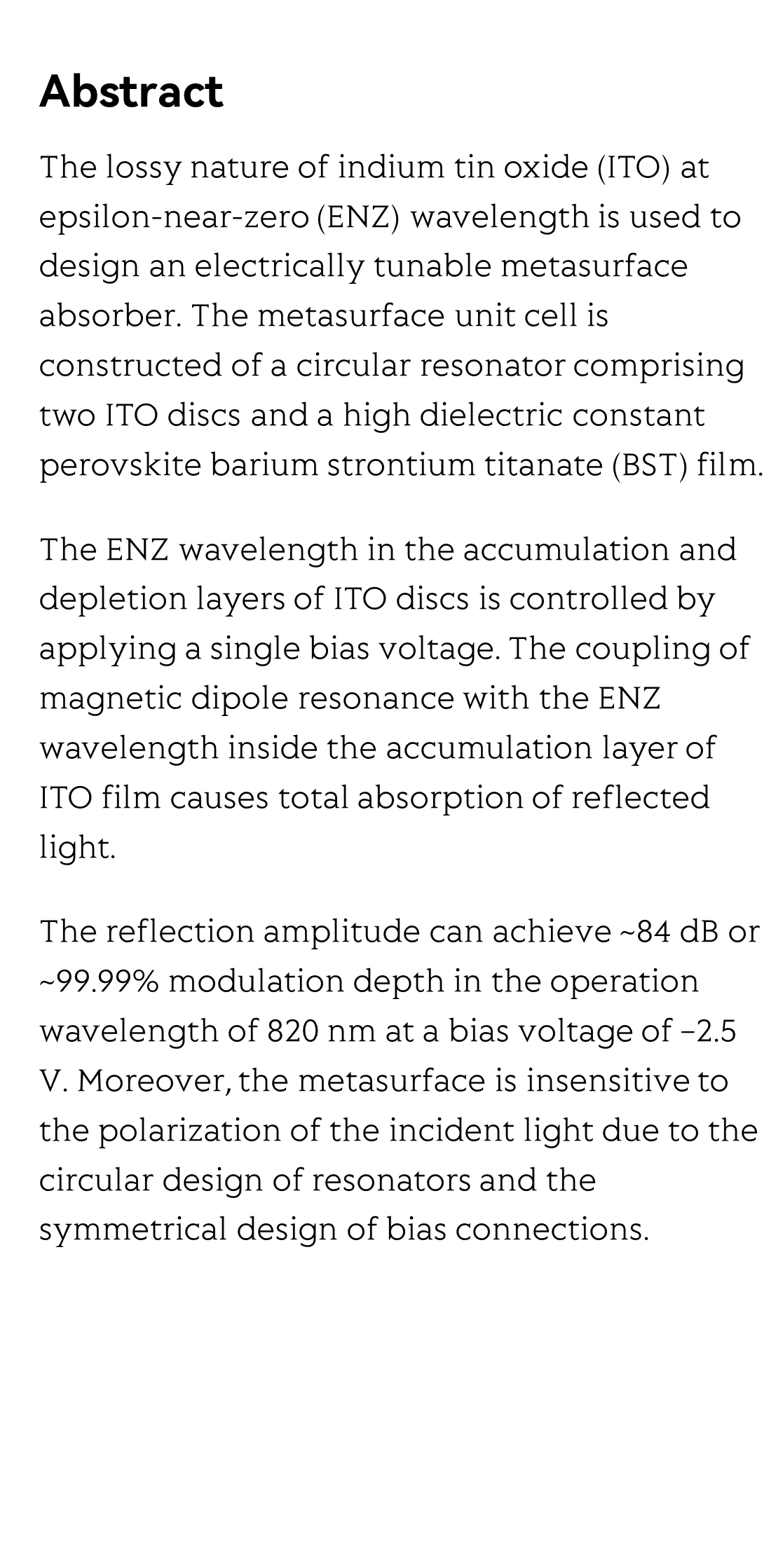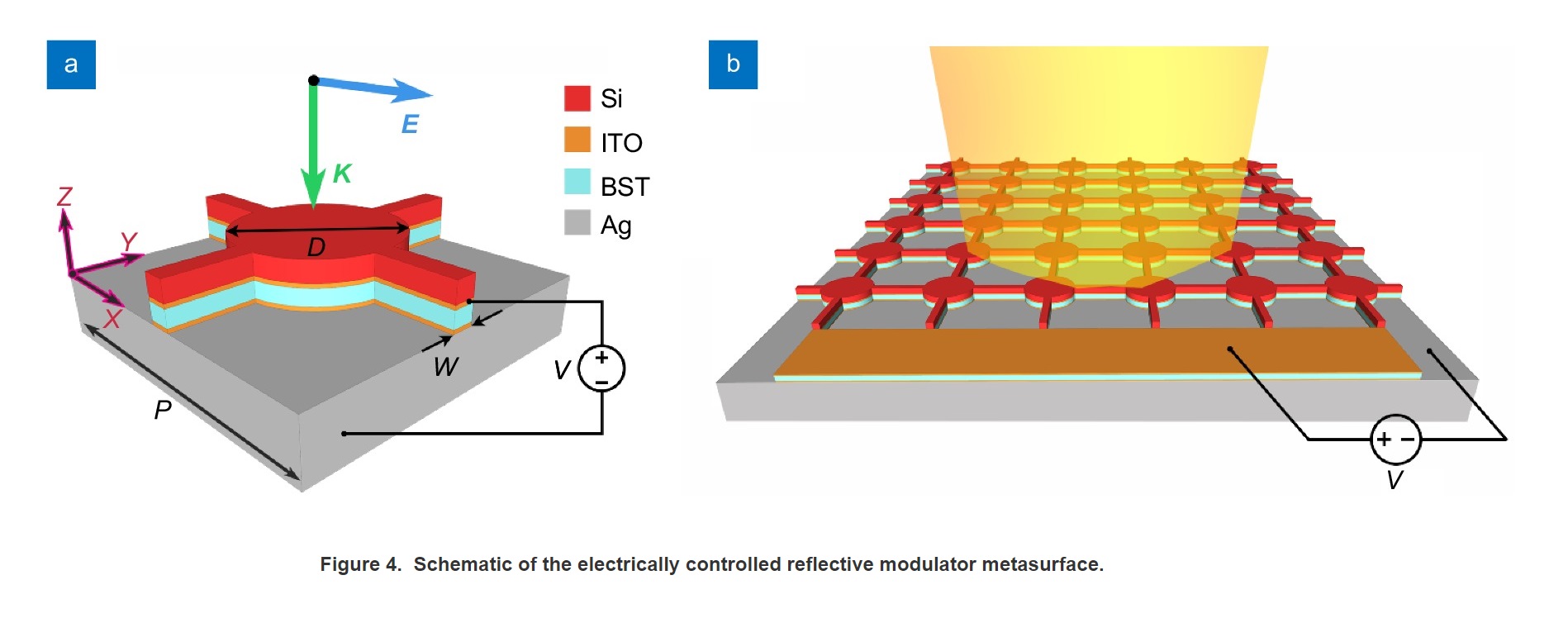(Peer-Reviewed) Ultra-high extinction-ratio light modulation by electrically tunable metasurface using dual epsilon-near-zero resonances
Arash Nemati ¹ ², Qian Wang ¹, Norman Soo Seng Ang ¹, Weide Wang ¹, Minghui Hong ², Jinghua Teng 滕京华 ¹
¹ Institute of Materials Research and Engineering, Agency for Science, Technology and Research (A*STAR), 2 Fusionopolis Way, Singapore 138634, Singapore
² Department of Electrical and Computer Engineering, National University of Singapore, Engineering Drive 3, Singapore 117576, Singapore
Opto-Electronic Advances, 2021-07-25
Abstract
The lossy nature of indium tin oxide (ITO) at epsilon-near-zero (ENZ) wavelength is used to design an electrically tunable metasurface absorber. The metasurface unit cell is constructed of a circular resonator comprising two ITO discs and a high dielectric constant perovskite barium strontium titanate (BST) film.
The ENZ wavelength in the accumulation and depletion layers of ITO discs is controlled by applying a single bias voltage. The coupling of magnetic dipole resonance with the ENZ wavelength inside the accumulation layer of ITO film causes total absorption of reflected light.
The reflection amplitude can achieve ~84 dB or ~99.99% modulation depth in the operation wavelength of 820 nm at a bias voltage of −2.5 V. Moreover, the metasurface is insensitive to the polarization of the incident light due to the circular design of resonators and the symmetrical design of bias connections.
Flicker minimization in power-saving displays enabled by measurement of difference in flexoelectric coefficients and displacement-current in positive dielectric anisotropy liquid crystals
Junho Jung, HaYoung Jung, GyuRi Choi, HanByeol Park, Sun-Mi Park, Ki-Sun Kwon, Heui-Seok Jin, Dong-Jin Lee, Hoon Jeong, JeongKi Park, Byeong Koo Kim, Seung Hee Lee, MinSu Kim
Opto-Electronic Advances
2025-09-25
Dual-frequency angular-multiplexed fringe projection profilometry with deep learning: breaking hardware limits for ultra-high-speed 3D imaging
Wenwu Chen, Yifan Liu, Shijie Feng, Wei Yin, Jiaming Qian, Yixuan Li, Hang Zhang, Maciej Trusiak, Malgorzata Kujawinska, Qian Chen, Chao Zuo
Opto-Electronic Advances
2025-09-25





